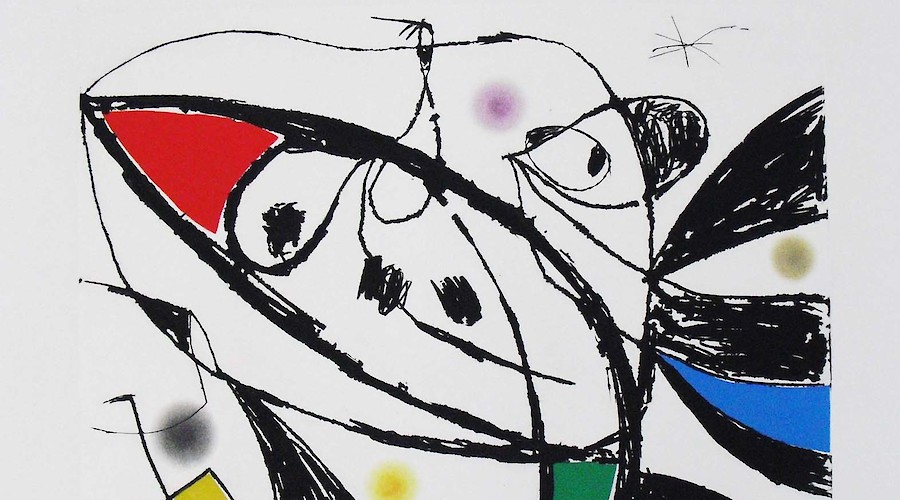Joan Miró, from the Collection of The Kreeger Museum

The Kreeger’s complete collection of works by Joan Miró, including “The Mallorca Suite,” “Makimono,” and “El Vol de l’Alosa,” will be on view on an intimate special exhibition.
Joan Miró was the consummate professional artist, a perfectionist, who insisted he was a “self-taught amateur” in order to secure for himself permission to transgress traditional techniques –to experiment and improvise– especially in pursuit of printmaking as a medium for his breathtaking expressions of devotion for Catalan culture. His beloved Mallorca, the sunlit island where he lived and worked after 1940, was the subject of such inventiveness.
Purchased in 1973 by David and Carmen Kreeger when they attended Miró’s 80th birthday celebration in Palma de Mallorca, The Mallorca Suite is an unconventional masterpiece by one of Spain’s greatest artists, and The Kreeger Museum is believed to be the only place in the United States where a complete set of the suite may be seen. Added to the set are color states of each etching, black states and technical (or reverse) prints. Inclusion of these decompositions offers viewers the exceptional opportunity to see the work evolve, as the artist himself did in 1973. Miró saw on the pages the familiar faces of people who lived and worked, as did he, on this Mediterranean island. We are not meant to recognize them; we are only to experience delight in scrutinizing the emergence of visages we shall never know but will never forget. The etched title page and a full color gouache painting puts the exclamation point on the entire display that is The Mallorca Suite of 36 images by Joan Miró.
Thirty-six feet long and 16 inches wide of specially woven raw Lyon silk, printed with lithographed and etched designs from Miró’s original wood and metal blocks, impressed with lustrous colored inks –this is the basic description of Miró’s tour de force, Makimono, the execution of which took five years from conception to completion in 1956. David Kreeger purchased Makimono along with its incised and lacquered oak box in 1965. Inspired by scrolls of Asian art, Miró fused that Eastern spirit with a dynamic nod to primitive images of the West to create his exquisite modern Makimono. Meant to be read from left to right as it unfolds, it is told calligraphically in bright, joyous notes of symbols and colors which pronounce traditions of Catalan: crimson, black and yellow of the flag; green of the carob tree and the evergreen –metaphor for the Catalan nation; the star/asterisk –a symbol of Catalan separatism. The biomorphic characters are engaged in a dramatic narrative that the viewer cannot truly decipher. It is up to us to catch this joy ride with Miró’s inventive imagination.
“I make no distinction between painting and poetry. It therefore happens that I illustrate my canvases with poetic phrases and vice versa.” Inevitably his creative wanderlust led Miró to produce books, especially to illustrate the work of the many poets who had become his friends. In 1973, as a contribution to the festivities that were being prepared for his birthday commemoration, he completed a notable edition of El Vol de l’Alosa to celebrate the works of nineteen Mallorcan poets.
Specially commissioned for this project was the Guarro paper and also specially conceived for it was Miró’s own signatures figured into the watermarks on each sheet of the book. For each poem he executed a unique graphic sign and to hold the unbound sheets, a cloth box –in black on red (symbolizing Spain) and black on blue (symbolizing the sea around Mallorca).
Even the type characters were specially made in Bodoni 12 and melted down after this one use. Miró decided that the poets deserved an even greater tribute, so he cut a new lithograph as a memento –original black printing with colors added by his own hand. It is this complete assemblage that the Kreegers purchased, in addition to The Mallorca Suite, when they visited Palma de Mallorca.